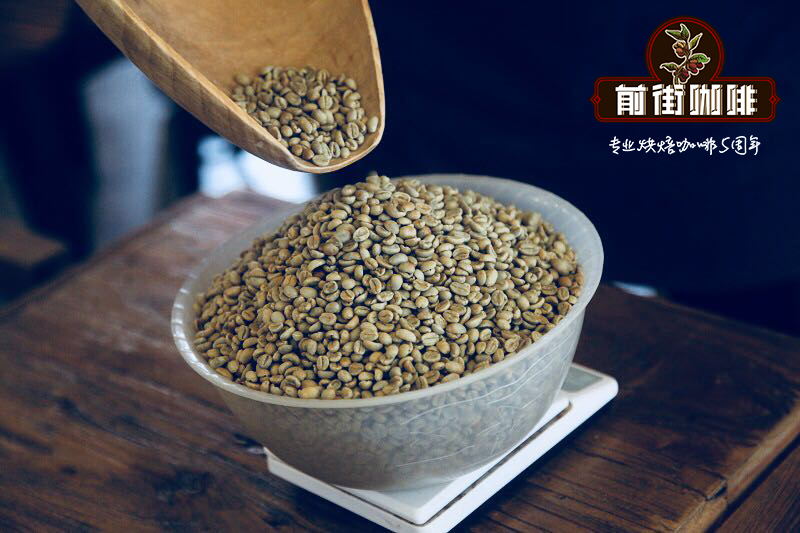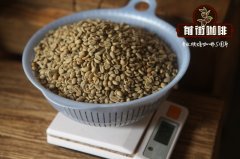Coffee bean producing countries introduce Ecuadorian coffee

Professional coffee knowledge exchange more coffee bean information please follow the coffee workshop (Wechat official account cafe_style)
Ecuador, a member of the Union of South American Nations, is located in northwest South America, bordering Colombia in the north, Peru in the south and the Pacific Ocean on the west. Quito, the capital, is located in the foothills of Mount Picancha.
As we all know, Ecuador is one of the countries with the richest biodiversity in the world. There are more than 1500 species of birds in this country, which is about 1x6 of all birds in the world. Despite its small size, Ecuador actually has twice as many plant and animal species as the United States and Canada, four times as many as in Europe, and the largest plant species per unit area in the Americas. Unfortunately, the rate of deforestation is increasing at an alarming rate.
Coffee was introduced in Ecuador in the early 19th century and remained one of Ecuador's main export crops until the 1970s. Today, oil, shrimp and bananas are the most exported. )
The decline in coffee production in Ecuador began in the 1980s as acreage began to decline and coffee was often unharvested because of its own low prices. Coffee production began to decline sharply during the price crisis of the 1990s and early 2000s. Ecuador's economy is heavily dependent on oil and less dependent on agriculture than many other coffee-growing countries. Ecuador produces less than 1% of world coffee production. The income of coffee has decreased, especially during this period, the international price of coffee has been very low, often lower than the cost of production.
Coffee did not become a major commercial project in Ecuador until the late 1920s, when the cocoa industry was threatened by disease and coffee was still largely a successor to the national economy.
Coffee cultivation in Ecuador
The coffee-growing land of Ecuador is located in the western hills of the Andes south of Guayaquil and in the hills of the coastal province of Manabi. The low altitude area of Manabi, which is 500-700 meters above sea level, is the largest area of production in Arabica, producing about 50% of the country's. Some Robusta varieties, used for soluble (instant) coffee, are grown in the north of Ecuador. Most Ecuadorian coffee is grown on small farms covering an area of 1 to 10 hectares, about half of the coffee land is grown separately, while the rest is grown on cocoa, citrus fruits, bananas and mangoes.
One of the most interesting things that happened in Ecuador in Ecuadorian soil was the emergence of a new variety called Sidra. This is a mixture of bourbon and Tibica varieties, and the Sidra variety will show very unique fruit and flower flavor characteristics. After growing and carefully roasting at high altitudes, these coffees stand out on the cup table and are likely to bring Ecuador closer to professional coffee-producing countries.
Ecuador ES Coffee-Ecuador
The famous South American brand, Ecuadorian Grade A coffee, has a large state-run seed value garden; 100% is produced in the natural vegetation zone of 1300-2000 Michael, popular in Europe and the United States, and tastes exquisite world-class Arabica Arabica flavor at supermarket prices.
ES Coffee is a clean organic coffee grown on the slopes of the Andes in Latin America. It is 100% pure coffee, and the quality of our coffee has been guaranteed and improved by working to improve the economic and working conditions of the plantation, while maintaining the small scale of the coffee plantation and the biodiversity in the hospital. In addition, it is one of the very important economic sources of coffee origin, because it is all dried and packaged locally, which ensures that it is a very unique kind of coffee in the world! It also ensures its unique taste.
Important Notice :
前街咖啡 FrontStreet Coffee has moved to new addredd:
FrontStreet Coffee Address: 315,Donghua East Road,GuangZhou
Tel:020 38364473
- Prev

How should I drink Indonesian coffee? Indonesian Socridi Cooperative Coffee introduces the flavor of Indonesian coffee
Professional coffee knowledge exchange more coffee bean information please follow Coffee Workshop (Wechat official account cafe_style) Indonesia is a large archipelago country composed of many volcanic islands, with excellent coffee growing environment and latitude, each island has different characteristics due to different topography and climate. The producing area of the Socridi Cooperative (Solok Radjo) is located in Nagar, Solok District.
- Next

Brazilian boutique coffee Mogiana Mojiana Queen Manor Yellow bourbon
Professional coffee knowledge exchange more coffee bean information please follow Coffee Workshop (Wechat official account cafe_style) Brazil Mogiana Rainha Farm Yellow Bourbon Natural Queen Mojiana Manor Yellow Bourbon seed is a founding member of the Brazilian Fine Coffee Association the Carvalho Dias family has been operating the Queen's Manor, the nephew of the owner since 1890.
Related
- Does Rose Summer choose Blue, Green or Red? Detailed explanation of Rose Summer Coffee plots and Classification in Panamanian Jade Manor
- What is the difference between the origin, producing area, processing plant, cooperative and manor of coffee beans?
- How fine does the espresso powder fit? how to grind the espresso?
- Sca coffee roasting degree color card coffee roasting degree 8 roasting color values what do you mean?
- The practice of lattes: how to make lattes at home
- Introduction to Indonesian Fine Coffee beans-- Java Coffee producing area of Indonesian Arabica Coffee
- How much will the flavor of light and medium roasted rose summer be expressed? What baking level is rose summer suitable for?
- Introduction to the characteristics of washing, sun-drying or wet-planing coffee commonly used in Mantenin, Indonesia
- Price characteristics of Arabica Coffee Bean Starbucks introduction to Manning Coffee Bean Taste producing area Variety Manor
- What is the authentic Yega flavor? What are the flavor characteristics of the really excellent Yejasuffi coffee beans?

